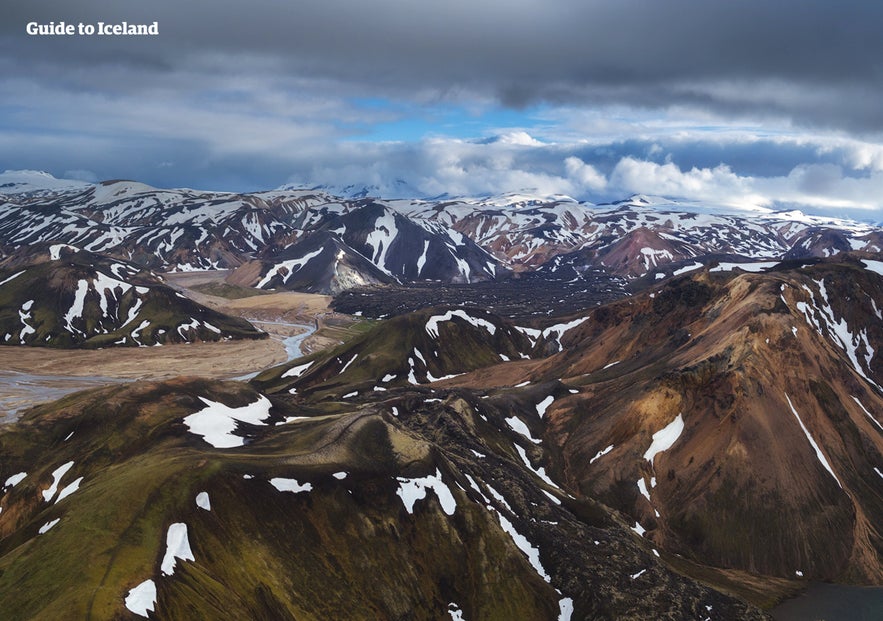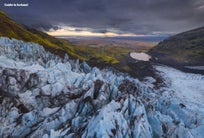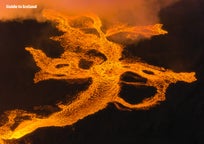
The Arctic Fox | A Tale of Iceland's Only Native Mammal

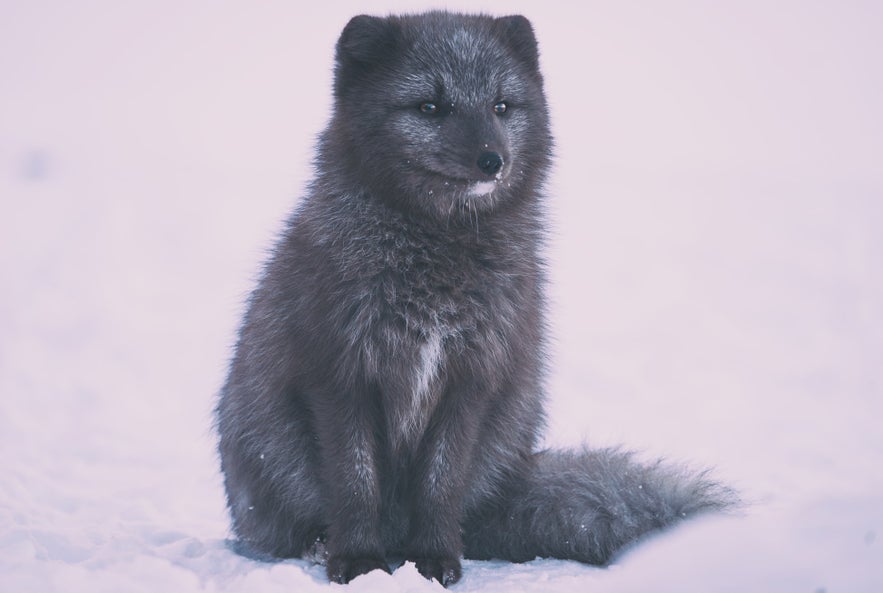
How many Arctic Foxes live in Iceland? How did they come to live on the island? What are their typical habitats and how can you spot one for yourself? Where in Iceland can you learn more about this incredible little canine and even grab a photograph? Read on to discover all there is to know about Iceland’s only mammalian native, the Arctic Fox.
Photo credit above by Jonatan Pie
Iceland—a large, but isolated landmass, edging nefariously against the Arctic circle—has long been of interest to the scientifically minded. Cut off from the evolutionary patterns of mainland Europe and North America, Iceland’s flora and fauna is a fascinating field of study unto its own. After all, which species of animal or plant are hardy enough to inhabit, adapt and thrive on a volcanically-active yet largely frozen island?
To be frank with you, it's actually a surprising amount.
Now, that’s not to suggest Iceland is famed for its exotic safaris, nor as a habitat that suits large predators—this is despite the prolific merchandising of polar bears, an animal that only periodically arrives in Iceland, by accident. In fact, one could argue that, for human beings at least, Iceland’s most dangerous predator is often the weather, a force quite capable of snuffing out lives within a matter of windswept seconds.
And yet, out there in that bleak, beautiful, threatening wild, there is a small, furry meat-eater who has prospered for ten thousand years, battling the elements and the rough terrain to become one of history’s toughest natural survivors.
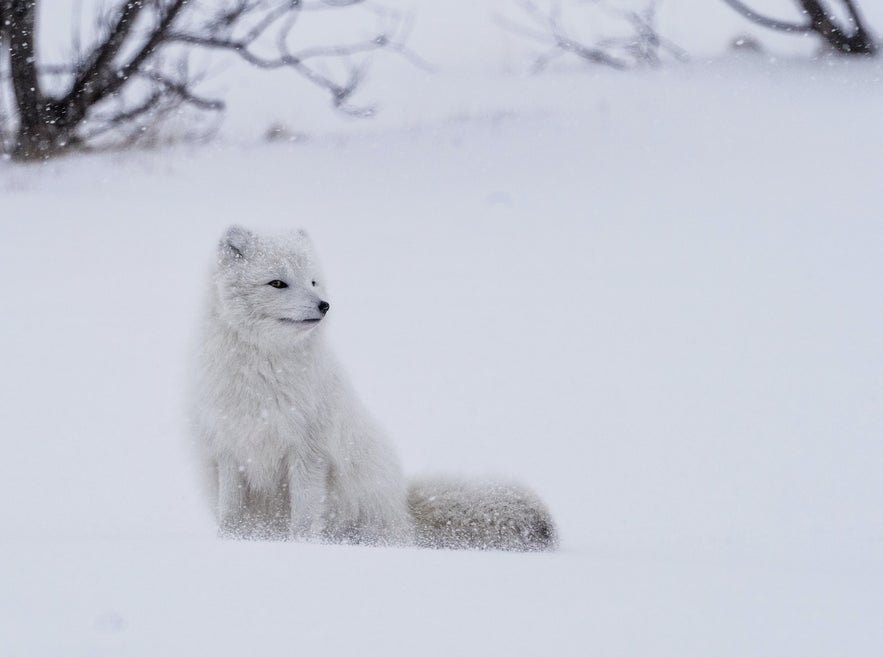 Photo by Jonatan Pie
Photo by Jonatan Pie
As Iceland’s only native mammal, this creature has been both a blessing and a curse on the local population, often pinching chickens, young lambs and even burrowing its way into human parlours. All the while, its fur and meat have provided warmth and sustenance in times of overbearing difficulty.
I talk, of course, of the Arctic Fox (Vulpes Lagopus), a verified local whose knowledge of Iceland surpasses even that of the experts here at Guide to Iceland. No other mammal has such an authentic connection to the island, nor do they possess the physical characteristics that deem them masters of their environment.
And so, with my clumsy human fingers, I will attempt to gracefully detail the lives of these creatures, and perhaps draw out from their existence certain lessons that we can apply to our own lives living in a landscape characterised by ice and fire.
Biology
 Photo by Jonatan Pie
Photo by Jonatan Pie
The Arctic Fox—otherwise referred to as a snow fox, polar fox or white fox—is a 3 to 5 kg (7 to 11 lbs) carnivorous mammal, notable for its thick white, blue or brown coat. The colour of the foxes' coat changes to reflect the passing seasons; this is particularly true of those living in Iceland, where only a third will sport a white winter coat. The remaining two thirds will turn brown and grey during the winter, blending in with the country's platinum-coloured hillsides.
- See also: Iceland's Seasonal Contrasts
This dense, furry protection provides the fox with an enormous advantage against the cold, with temperatures having to drop as low as -50°C (−94°F) before the animal begins to show visible signs of discomfort. In this sense, the Arctic Fox trumps the mighty, and far more infamous Polar Bear as the Arctic Circle's best-suited predator.
Other adaptations see the Arctic Fox’s coat comprised of multiple fur layers (excellent for heat insulation) as well as a high percentage of body fat and a countercurrent heat exchange in the paws, helping to maintain core body temperature. The pads on these paws are also covered with a layer of fur. During the autumn months, the Arctic Fox will pack on fat reserves, often increasing its body mass by 50%.
Given such evolutionary tools, the Arctic Fox is, truly, a force of nature when it comes to living in some of the most frigid and inhospitable regions on the planet. Unlike most sub-arctic animals, the Arctic Fox does not hibernate throughout the winter but instead adapts itself to the natural surroundings. One clear demonstration of this is how the fox’s coat will morph colour with the passing seasons.
- Read about the fascinating world of Wildlife & Animals in Iceland
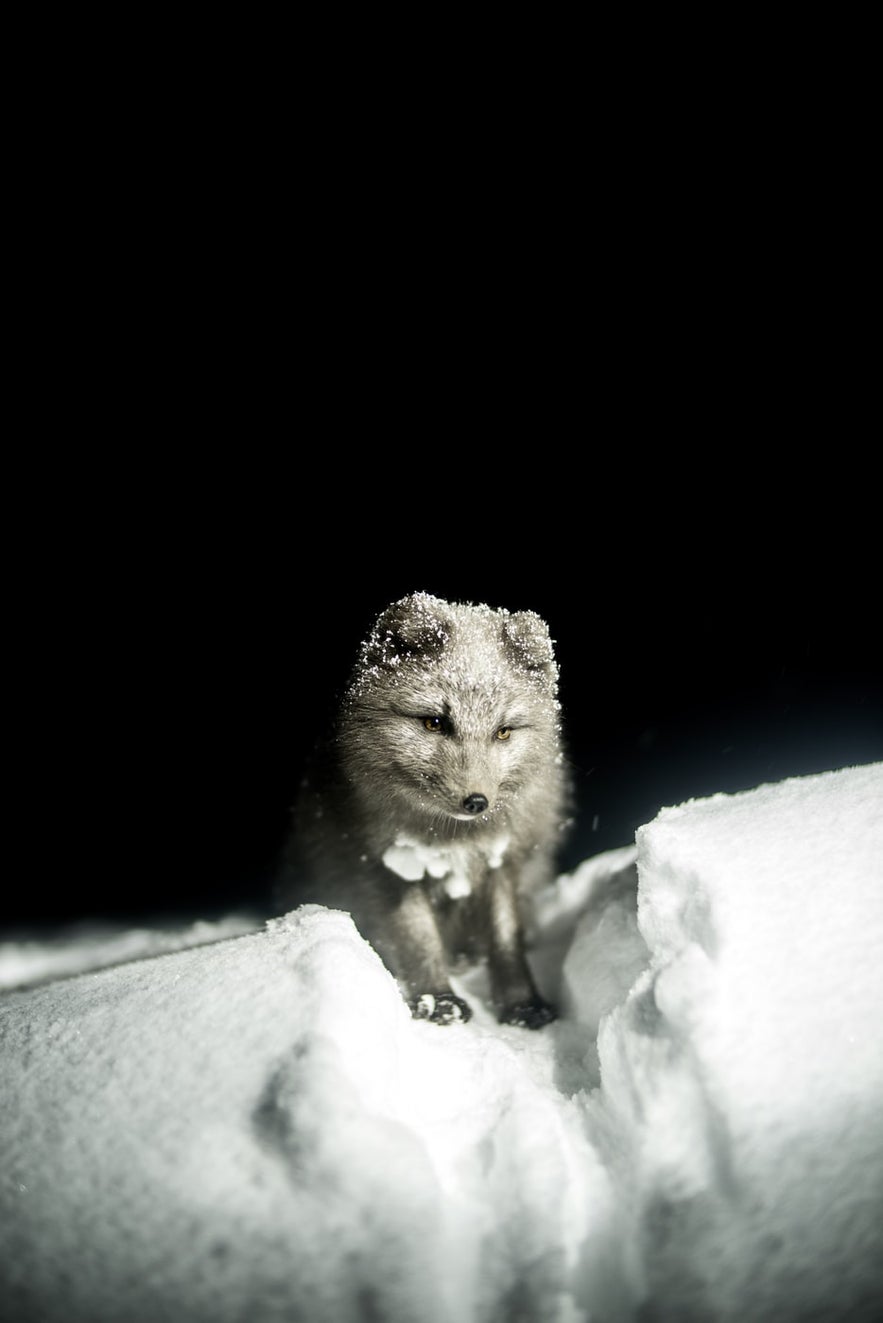 Photo by Jonatan Pie
Photo by Jonatan Pie
As previously stated, the fox’s coat serves as a particularly efficient means of camouflage, harmonizing flawlessly with a landscape of pure white snow and dark, ragged rock. This serves as an excellent tool for hunting and as an effective means of not being hunted themselves.
In Iceland, the Arctic Fox has no natural predators, save human beings; elsewhere, the creature is pursued by the likes of the polar bear, their canine cousin, the Red Fox, and even Golden Eagles.
- See also: Things That Can Kill You in Iceland
Keen observers will also note the animals’ short legs, rounded snout and short, tufty ears. Together, these tools allow the Arctic Fox to detect for prey under the snow. Naturalists will often spot the Arctic Fox leaping feet into the air, curling its body and diving snout-first into this frozen blanket, providing one of the more visually stimulating hunting methods in the animal kingdom.
One can also not overlook the creature’s large, bushy tail (or "brush"). Measuring at around 14 inches long, the fox will often wrap itself in its own tail to conserve heat. This tail is also utilised in hunting, working as a means of balance and movement, and has evolved over time to provide larger prey with a quick-moving distraction, protecting the animals’ sensitive upper body.
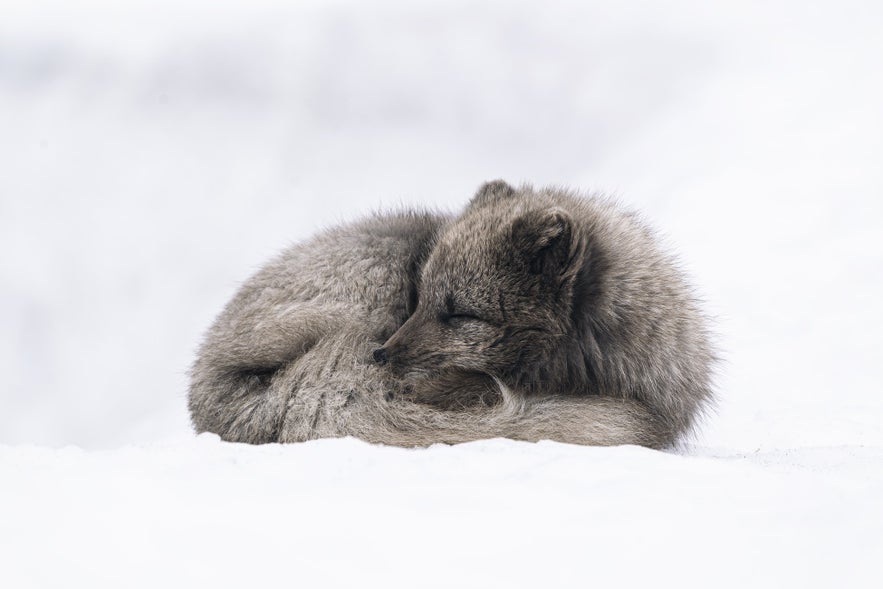 Photo by Jonatan Pie
Photo by Jonatan Pie
There are four subspecies of the Arctic Fox: the Iceland Arctic Fox, the Greenland Arctic Fox, the Pribilof Islands Arctic Fox and, finally, the Bering Islands Arctic Fox. This range of subspecies and their respective habitats—classified as a “circumpolar distribution”—is a testament to the Arctic Fox’s ability to trek over incredible distances.
Arctic Foxes are known to live between three to six years, a respectably long time given the trials and tribulations of life in the wild. In captivity, Arctic Foxes have been known to live to the ripe old age of fourteen.
Habitat & Diet
The Arctic Fox is Iceland’s only terrestrial mammal, meaning it is the only native mammal to the country. All the rest—the cattle, sheep, reindeer and horses—were brought deliberately to the island by early settlers (or, in the case of the deer, 18th Century traders who unsuccessfully tried to start a venison farming industry).
Though it may appear that these animals are more authentically Icelandic, it was the fox that traipsed these lands first.
The Arctic Fox is thought to have come to Iceland by its own means at the end of the last Ice Age, trotting across the frozen sea from mainland Scandinavia and Greenland. This research was undertaken by the University of Durham, in the UK, and has led to a greater understanding of this small animal’s origins.
- See also: Birds in Iceland
When it comes to population density, biologists look to where the largest number of birds are on the island. That would be the Westfjords, where towering and dramatic bird cliffs offer the resident foxes a banquet of eggs and fresh meat. Hornstrandir is a particularly notable spot, given the fact that Arctic Foxes are a protected species here, free to roam and hunt without human intrusion.
 Photo by Jonatan Pie
Photo by Jonatan Pie
Outside of Iceland, in regions inhabited by larger predators such as wolves and polar bears, Arctic Foxes will often resort to eating carrion leftover by their larger mammalian cousins. The foxes will, in fact, deliberately follow such predators, mile after mile, in hope of bagging an easy, second-hand meal. In such circumstances, an Arctic Fox might be found gnawing on seal or caribou carcasses.
Among its other culinary preferences are lemmings, voles, seal pups, mice and flightless young birds. And though the Arctic Fox tends to inhabit and, for lack of a better word, control, up to 9 square kilometres of territory, it will walk far, far beyond that in search of food. The Arctic Fox is very much an opportunistic feeder and will resort to chowing down on berries or even faeces in times of deprivation.
Given such recent breakthroughs in understanding the foxes' relationship to habitat and food, there is still much to be uncovered about the lives of these small animals.
Reproduction & Behaviour
Arctic Foxes are monogamous animals, meaning that they have one mating partner for life. Mating season takes place each year from April to July; the first litter will be born April/June, whilst the second is born July/August. These litters are known as kits, and will often bear 5-12 whelps (Arctic Fox puppies), depending on food scarcity. In the past, up to 25 offspring have been recorded in a single litter.
Whelps are raised in intricate underground dens, the oldest of which can have a hundred different openings. Despite the fact these dens are left uninhabited throughout the majority of the year, it is in this labyrinthine, subterranean world where the Arctic Fox young will first experience the challenges of daily life. These dens are often hundreds of years old are used by numerous generations of Arctic Fox.
Still, successfully raising a full litter is a rare occurrence, and in times of food shortage, the weaker siblings are often consumed or abandoned in order to ensure the strongest pups survive. This rather ratchety parenting has nothing, I’m sure, to do with the fact that it is the male Arctic Fox who, in large part, rears the children.
Each den will be inhabited by the male, the young and two vixens. Amazingly, one vixen is non-breeding but stays to help raise and wean the litter. Each fox burrow will resemble a familial set-up such as this and are often built a good distance apart from one another in order to avoid competition. These distinct and domestic homes often have a physical separation of two kilometres.
 Photo by Jonatan Pie
Photo by Jonatan Pie
Weaning the young is concluded after two to four weeks, after which the whelps emerge from the den. Nine months on, they will have reached sexual maturity, and thus adulthood; by next year’s mating season, the surviving offspring will already be nomadic and hunting. In the intermittent period, the proud parents will have also left one another’s company, only to soon return and start the process over.
The Arctic Fox is considered a shy creature, spending the majority of the year hunting solitarily at night. With that being said, there have been numerous occasions caught on photograph and video that show the creature’s natural curiosity and intelligence, often trotting right up to photographers and campers. They have even been observed forming small hunting packs to better scour the countryside for food. A group of Arctic Fox is known as a "skulk" or "leash".
Threats
 Photo by Fabiana Rizzi
Photo by Fabiana Rizzi
The monitoring of Arctic Fox populations in Iceland began in 1979. Until 2010, the species’ population was rising steadily, from around 2000 foxes at the beginning of the survey to approximately 10,000. From 2010, however, biologists began to notice a sudden and steady 32% drop off in numbers.
- See also: Iceland's Troubled Environment
What’s particularly unusual is how this diminishing population doesn’t fit the natural trend; animal populations will often rise and fall every few years or so, depending on the habitat and food scarcity.
That’s not to suggest population numbers have yet reached a critical level; Arctic Foxes are classified as of “Least Concern” by wildlife conservation agencies, meaning there is no threat of imminent extinction.
Still, species move up and down the spectrum as their dietary habits and habitats deteriorate under human influence. Over the last ten years, mankind saw the last of West African Black Rhinoceros, the Pyrenean Ibex and the Yangtze River dolphin, among others. Despite our efforts, it seems mankind is still unable to provide an all-encompassing protection for wild animal species, wherever they sit on the conservation spectrum.
- See also: Sustainable Tourism in Iceland
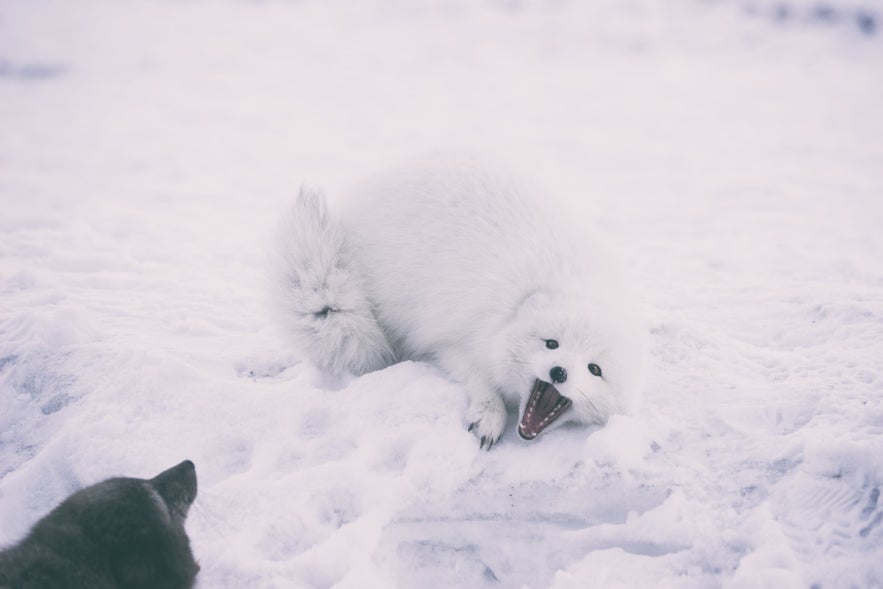
Photo by Jonatan Pie
Hunting Arctic Fox still takes place in Iceland each year, with it now even being run as a multi-day tour. Why anyone in their right mind might decide to go hunting these animals for fun is far beyond me, but it does strengthen the correlation, even in Iceland, that nature and wildlife is something that we humans love to commodify.
By those who partake in blood sports, hunting Arctic Fox in Iceland is justified as a necessary action, utilised to protect cattle and Eider duck populations. This, of course, does not stand up for tourists visiting the island.
Whereas historically, foxes were hunted for their prized fur, a recent influx of Mink fur farms across the country have made it a valueless commodity. Still, den hunting does take place, an activity where every animal in the den, young or old, is slaughtered.
The Arctic Fox Centre
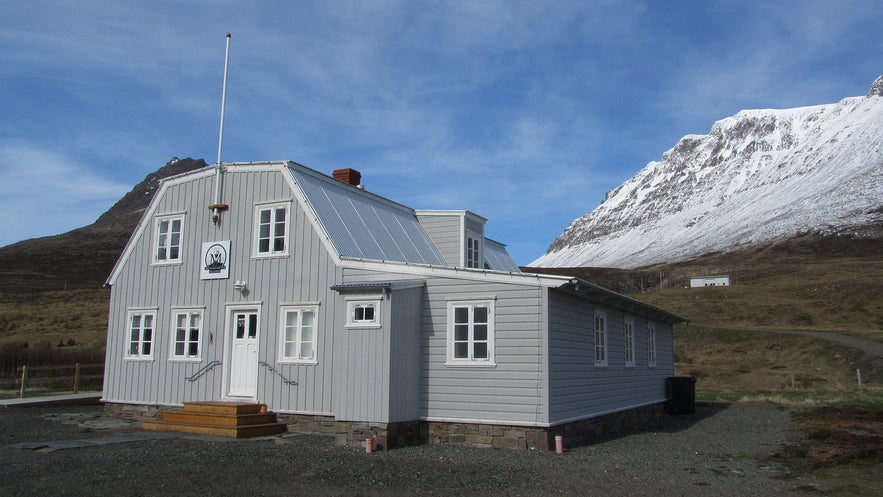 Photo by MoZie, from Wiki Creative Commons. No edits made.
Photo by MoZie, from Wiki Creative Commons. No edits made.
The Arctic Fox Centre is a non-profit organisation founded September 15th, 2007 in the fishing village of Súðavík in Iceland's Westfjords. The centre serves as both a research institute and a natural history exhibition, promoting academic fieldwork and sustainable eco-tourism practices. Working alongside scientists, travel experts, artists and media specialists, the Arctic Fox Centre is the only institution in the world wholly dedicated to the preservation and protection of Iceland's first land mammal.
- See also: The Westfjords of Iceland
The Arctic Fox Centre boasts large display boards comprised of fascinating scientific information and photographs, and taxidermy foxes that present an opportunity to really get to the grips with the physical dimensions and characteristics of the species.
Visitors to the centre can see two live Arctic Foxes, Ingi and Móri, who were rescued as pups after their parents were killed in a legal fox hunt in 2015. Both blue morphs, these creatures have become the ambassadors of the Arctic Fox here in Iceland, introducing thousands of people every year to the species’ many beautiful traits.
- See also: The Most Unique Experiences in Iceland
Raised and nurtured by humans, these two foxes are notoriously curious and friendly, coming right up to the wires of their enclosure to take a closer look at those who have travelled so far to see them. For those who lack the patience for tracking foxes in the wild, or are otherwise constrained by time, meeting Ingi and Móri is the surest way of seeing an Arctic Fox up close.
How to Spot an Arctic Fox
 Photo by Jonatan Pie
Photo by Jonatan Pie
Unless you happen to be incredibly lucky, spotting an Arctic Fox in the wild will require patience, preparation and a willingness to spend hours exposed to the natural elements. Some insider knowledge is also key; where are the foxes this time of year? Are there any known observation points? How close can one expect to get?
With such questions in mind, the next step is to decide whether you're going to participate in an organised wildlife spotting tour or to try your hand at tracking the creature down yourself. Without a measure of a doubt, the recommended method is the former, as it puts the experienced operators at the helm of the operation. By partaking in a group with a tour guide, you are also far more likely to learn about the behaviour, habitats and diet of the Arctic Fox.
The Arctic Fox Centre is one such institution that runs these tours, as well as specifically tailored excursions for filmmakers and photographers. In their hands, the centre will organise boat trips to and from Hornstrandir Nature Reserve, as well as settle any accommodation, dietary requirements and the logistics of the shoot itself.
It should be noted that organised trips to Hornstrandir occur only in May, June, July and occasionally August; for "winter shoots", where the white fur is crucial, further planning will have to be made in advance.
But, it is undoubtedly Hornstrandir where guest have the biggest chance of catching sight of this elusive mammal. In fact, the Arctic Foxes that inhabit the area have become surprisingly tame given their regular encounters with humans. In some cases, they may even run up to eat food from a visitor's outstretched palm.
- See also: Travel Etiquette in Iceland
This shouldn't be encouraged, don't get me wrong—it motivates the foxes to rely on people for survival—but, if it's happening to you, there's not a lot that can be done to deter it. Curiosity is, after all, a part of the mammalian complex. Simply show respect, keep calm, and allow the fox to continue on its day.
For those who are hoping to see an Arctic Fox for themselves, it is imperative that the environment should be left as natural and untouched as possible. Littering, or leaving excess equipment, is an omnipresent danger for animals worldwide; best to be elusive, like the fox, leaving no trace but footprints in the snow.
Did you enjoy our article about Arctic Foxes in Iceland? Did you get a chance to see one, or perhaps take a visit to the Arctic Fox Centre in the Westfjords? Make sure to leave your comments and queries in the Facebook box below.
더 많은 흥미로운 게시글
10월에 아이슬란드 방문하기|무엇을 하고 어디를 가볼까
아이슬란드의 10월, 이 때 방문할 수 있는 곳들은 어디가 있을까요? 10월의 날씨에 대해 알아야할 점, 어떤 곳들을 둘러보면 좋을지, 짐은 어떻게 싸야 하는지, 10월에 어떤 투어를 즐길 수 있는지, 그리고 어떤 행사들이 준비되어 있는지 알아봅니다. 10월은 아이슬란드에 방문하기에 환상적인 시기입니다. 여름의 성수기는 이미 끝났지만 기온은 아직 한겨...더 보기
아이슬란드 얼음 동굴 완벽 가이드
아이슬란드의 얼음 동굴에 대한 모든 정보를 한눈에 확인하세요. 최고의 얼음 동굴은 어디에 있을까요? 방문하려면 어떻게 해야 할까요? 그리고 얼음 동굴과 빙하 동굴은 무엇이 다를까요? 아이슬란드의 신비로운 얼음 동굴을 낱낱이 소개합니다! 아이슬란드를 방문하는 많은 여행자에게 얼음 동굴 탐험은 꿈 같은 모험입니다. 광활한 빙하 속에서 자연적으로 형성된 이...더 보기아이슬란드 토종말에 대한 모든 것
아이슬란드의 토종말이 특별한 이유는 무엇일까요? 아이슬란드 토종말과 다른 품종간의 차이점이 있다면 무엇일까요? 아이슬란드 어디에서 승마가 가능할까요? ‘아이슬란드 토종말’은 실제 보면 ‘아이슬란드 조랑말’이라면서요? 이런 질문이 있으시다면 아래 글을 읽어봐 주세요. 아이슬란드 초기 정착 시대부터 현재까지 아이슬란드 말의 역사, 중요성 그리고 현재의 모습...더 보기

아이슬란드 최대의 여행 마켓플레이스를 전화에 다운로드하여 전체 여행을 한 곳에서 관리하세요
전화 카메라로 이 QR 코드를 스캔하고 표시되는 링크를 누르면 아이슬란드 최대의 여행 마켓플레이스를 주머니에 넣을 수 있답니다. 다운로드 링크가 포함된 SMS 또는 이메일을 받으려면 전화번호 또는 이메일 주소를 추가하세요.
